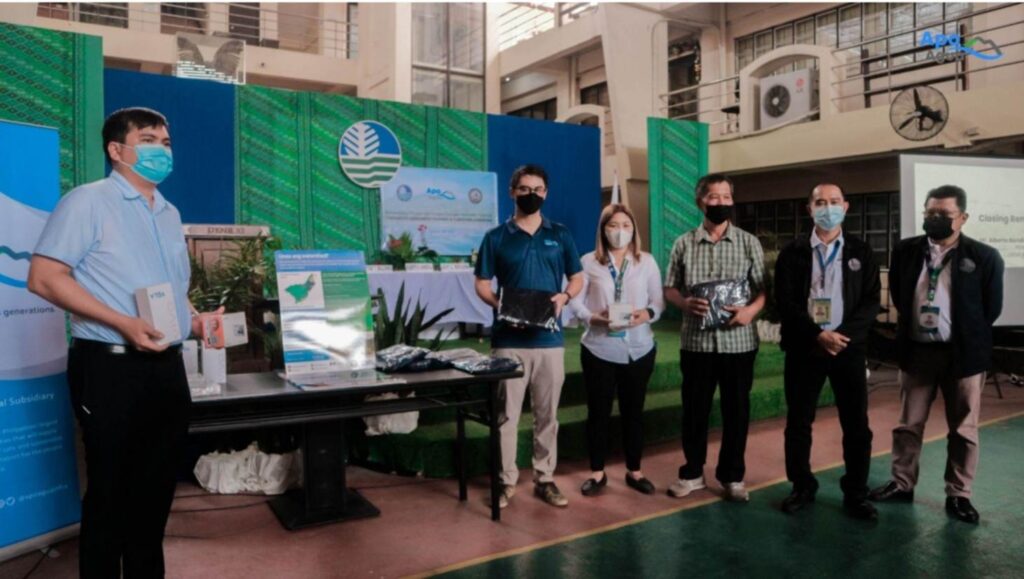Text by Henrylito D. Tacio
Photos courtesy of Apo Agua
“A watershed is a watershed is a watershed.” Do you know who said those words? Well, the late Paz L. Lopez when she was the secretary of the Department of Environment and Natural Resources (DENR) at the time of the presidency of Rodrigo R. Duterte.
Most Filipinos know what watershed is. Some people think it’s a forested area where trees are growing extensively. Actually, watersheds are areas of land that drain rainwater into one location such as a stream, lake, or wetland – and all the underlying groundwater.
Larger watersheds contain many smaller watersheds. It all depends on the outflow point; all of the land that drains water to the outflow point is the watershed for all that outflow location.
Watersheds constitute about 75% of the total land area of the country. Our country has a total of 119 proclaimed and 154 priority watersheds with a total land area of 1,376,455.10 hectares and 11,690,695.00 hectares, respectively.
Davao City has eight watershed areas, including the Talomo-Lipadas watershed located in Toril District. “These watersheds are natural reservoirs for the pristine potable water that has been certified as one of the world’s cleanest drinking waters,” said the environmental group Interfacing Development Interventions for Sustainability (IDIS).
Studies conducted by the Laguna-based Philippine Council for Agriculture, Aquatic and Natural Resources Research and Development (PCAARRD) showed that most watershed areas in the country are now devoid of their forest cover. As a result, accelerated soil erosion, flash flooding, and drought have become more prevalent, causing much destruction.
Davao City, the country’s largest city in terms of land area, is not spared from deforestation. In 2020, the city lost 398 hectares of natural forest cover, according to the Global Forest Watch.
Aside from stopping deforestation, one of the best ways to contain the fast disappearance of the forest cover in watershed areas is reforestation or the planting of trees in areas where trees used to grow.
One good news I recently read was the partnership of Apo Agua Infrastructura, Inc. (Apo Agua), the regional office of the Department of Environment and Natural Resources (DENR R-11), and FARDECO Multipurpose Cooperative (FARDECO). These institutions are working together on a five-year reforestation program for the rehabilitation of DENR’s 200-hectare site in Barangay Cadalian, Baguio District.
The cooperation of Apo Agua and DENR came into existence due to their shared obligation of helping preserve the watershed and providing livelihood opportunities to the community. Both are joining forces together to raise awareness of watershed conservation and biodiversity in the community through a holistic Information, Education, and Communication campaign.
Apart from multimedia materials such as posters and videos, metal signages will be put up in Baguio District barangays, highlighting local endemic species to promote wildlife conservation through the preservation and protection of animals, plants, and their habitats.
“We’ve worked with Aboitiz on many projects, and this reforestation program is not just about planting trees; it’s also about restoring and caring for our NGP (national greening program) area within the Panigan-Tamugan Watershed,” said Bagani Fidel Evasco, executive director of DENR R-11.

It must be recalled that Davao was one of the cities that was identified as one of the nine major cities as “water critical areas” in a study done by the Japan International Cooperation Agency (JICA).
With the partnership now in place, Apo Agua is helping Dabawenyos ensure that water can be available all the way to their homes. “I hope (this partnership) does not end here, and we will continue with our conservation efforts,” Evasco said.
In addition, Apo Agua provided the monitoring team of City Environment and Natural Resources Office (CENRO) with digital cameras and the Lawin Patrollers with mobile devices, power banks, and raincoats to optimize their watershed monitoring activities.
Anna Lu, President of Apo Agua, said of this development: “It’s an honor to stand alongside DENR in protecting the Panigan-Tamugan watershed. At Aboitiz, we highly value environmental conservation as part of our strategy for advancing business and communities. We recognize the urgent need to protect the watershed as this will be the next water source of Davao City, and we are taking proactive steps to do so.”
This isn’t the first time Apo Agua has done this kind of partnership. In 2019, Apo Agua partnered with the Davao City Water District (DCWD) for its Adopt-a-Site Reforestation Program.
In like manner, Apo Agua also conducted a watershed baseline study with ARUP, a renowned consultancy firm that outlined recommendations for the Davao City Watershed Management Council (WMC) to determine sustainable policies for the Panigan-Tamugan watershed.
As it leads the construction of DCWD’s Bulk Water Supply Project construction works, Apo Agua is determined to expedite the project completion to provide safe and sustainable water supply to the DCWD consumers.
For the uninformed, road restorations from pipelaying activities in multiple sites across 15 barangays in the Second and Third Districts of Davao City are also ongoing.
Apo Agua Infrastructura, Inc., one of the Philippines’ largest private bulk water supply facilities, said that once the project they are building will be finished, more than 300 million liters per day of safe and sustainable water can be supplied to the DCWD for Dabawenyos.

